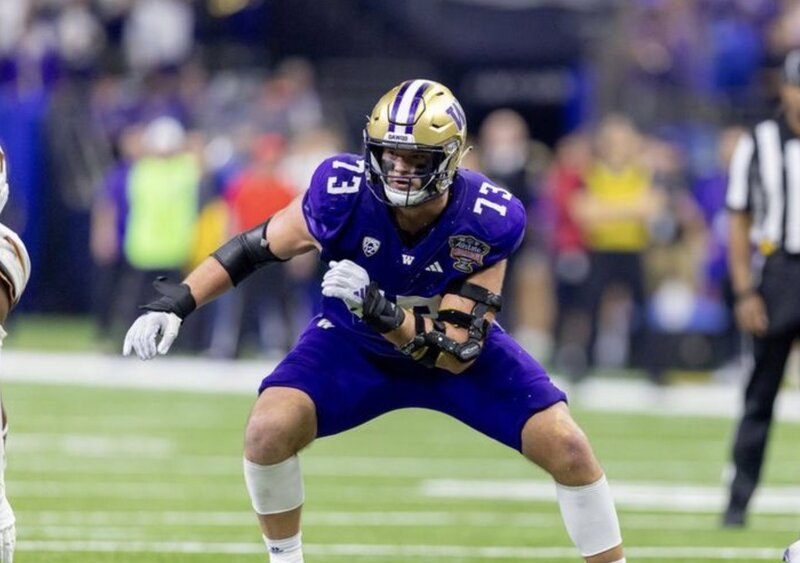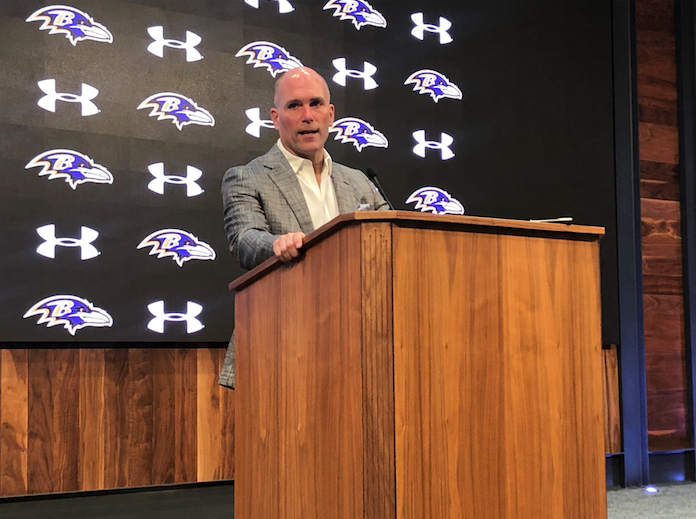Is the glass half empty or half full for the Ravens?
That’s been the burning question after an 8-9 season that concluded with a six-game losing streak, the franchise’s longest slide since 2007. Though change is inevitable in today’s NFL, arguably the worst injury picture in the league had prompted many to suggest the Ravens were better off running it back — or as close as you can get to that in today’s game anyway — than making significant changes.
But if Friday’s surprising dismissal of defensive coordinator Wink Martindale — 12 days after the conclusion of Baltimore’s season — was any indication, the Ravens are in for quite a facelift that goes beyond rebuilding the defensive line.
It’s not that Martindale was beyond reproach with his 2021 defense plummeting to 19th in points allowed, 25th in total yards surrendered, 32nd in passing yards allowed, and 28th in defensive efficiency, but Baltimore had been a top 10 defense in each of his first three seasons in charge and allowed the fewest points in the NFL over that time. Season-ending injuries to former Pro Bowl cornerbacks Marcus Peters and Marlon Humphrey, defensive end Derek Wolfe, and safety DeShon Elliott as well as a slew of other ill-timed absences were predictably difficult to overcome. It certainly wasn’t his group that managed to score three measly points in last January’s 17-3 playoff loss at Buffalo that included a defensive touchdown for the Bills.
But if the previous three years had illustrated the high ceiling for Martindale’s blitz-heavy, attacking defense, this season revealed its low floor and tiny margin for error. The Ravens hadn’t forced a ton of turnovers or collected many sacks from 2018-20 either, but a team locked in tight games virtually every week needed such plays to help flip the win probability in its favor. Worse than that, however, was the propensity for giving up the big play at the worst possible time with the Ravens surrendering the most completions of 20-plus and 40-plus yards in football this season. Even among established veterans, busted coverages and poor tackling were way too common from Week 1 through the season finale.
According to Football Outsiders, the Baltimore defense finished 18th in first-half efficiency — a more tolerable ranking when acknowledging their many injuries — before falling to 31st in the second half of games and 30th in “late and close” situations. This was a problem long before the Ravens lost Humphrey in Week 13 and were forced to play too many backups and practice-squad players in the secondary to realistically expect quality play over the final weeks.
With the benefit of hindsight, a stretch of critical defensive breakdowns in three of four games in November through early December may have been the breaking point for head coach John Harbaugh — or anyone else in the Baltimore brain trust meeting at their offseason summit this weekend — to ultimately push for a change.
While the offense was awful in the 22-10 loss at Miami on Nov. 11, a complete coverage bust at the end of each half led to 10 critical points for the Dolphins. The following week in Chicago, Martindale’s decision to leave cornerback Chris Westry in Cover 0 on a fourth-and-11 led to a long go-ahead touchdown and plenty of criticism for using such an approach with an inexperienced player. Leaving Humphrey, Peters, or even Anthony Averett on an island is one thing, but putting that on a second-year defensive back making his first NFL start felt more reckless than aggressive.
Fortunately, a game-winning comeback drive led by backup quarterback Tyler Huntley defanged much of the anger as Harbaugh defended the call the next day.
“We change it up situationally game to game, but Cover 0 was our call in those very situations in the game plan,” Harbaugh said. “Wink stuck with the game plan — a number of them worked. That one really easily could have worked. We were a little late with one of our blitzers and we were a little too aggressive at the sticks with Chris, and they made a play.”
The head coach’s tone wasn’t as forgiving two weeks later when Pittsburgh — who had been limited to a single field goal through the first three quarters — erupted for 17 points on its final three drives in the Ravens’ 20-19 defeat that started the six-game slide. Harbaugh cited Humphrey’s injury late in the fourth quarter and the shortage of cornerbacks as the rationale for going for a game-winning 2-point conversion, but he had clearly lost confidence in his defense. He would go on to make a similar decision in the 31-30 loss to Green Bay two weeks later.
In the moments after that Pittsburgh loss in Week 13, Harbaugh was asked whether his defense had tired or the Steelers had made a significant adjustment to spark their fourth-quarter turnaround. His response sounded like much more of an indictment of Martindale’s defensive calls.
“They hit ‘zero’ coverage a couple times,” Harbaugh said. “You go to the well too many times, and they get you.”
That certainly wouldn’t have been the first time the two didn’t see eye to eye on strategy — any staff worth its salt includes healthy debate and disagreement in such a competitive environment — but Harbaugh rarely even hints at such criticism publicly.
As much as many viewed that evening as the final nail in the coffin for the 2021 defense because of Humphrey’s season-ending injury, perhaps that was the moment a bit too much trust was lost in the defensive coordinator. What happened after that defeat shouldn’t have been as consequential to Martindale’s fate when considering Baltimore’s COVID-19 absences and the likes of Kevon Seymour, Robert Jackson, Daryl Worley, Geno Stone, Anthony Levine, and a 33-year-old Jimmy Smith playing way so many snaps in the secondary.
The highs remained high in 2021 as the Ravens smothered Pro Bowl quarterback Justin Herbert and the Los Angeles Chargers in Week 6 and still played strong defense for substantial chunks of games, finishing third in the league on third down, 12th in the red zone, and fourth in run defense efficiency. But playing a complete 60 minutes was all too elusive. When things went sideways on defense, it was much worse than this organization and city are used to seeing.
But after acknowledging this season’s woes, we’re still talking about a defensive coordinator who has widely been viewed as one of the league’s very best and garnered some interest as a head coach very recently. If Martindale didn’t deserve a mulligan after his work from the previous three playoff seasons, the heat needs to be on just about everyone moving forward, and we’re not just talking about offensive coordinator Greg Roman.
The pressure is now on Harbaugh to identify a strong replacement with Martindale unlikely to have much difficulty landing elsewhere. Wanting a defensive coordinator with a higher floor — bending without as much breaking, if you will — than what we witnessed in 2021 makes sense, but someone matching Martindale’s ceiling could prove difficult, especially with so much anticipated roster turnover on defense and not nearly as many cap dollars to devote to it as recent years.
Citing the late Bo Schembechler over his 14-year tenure in Baltimore, Harbaugh often likes to say, “You’re either getting better or you’re getting worse. You never stay the same.”
Time will reveal which category this move fits, but it’s difficult not to interpret it as a half-empty decision when recognizing Martindale’s full body of work and the factors that worked against him in 2021.

































